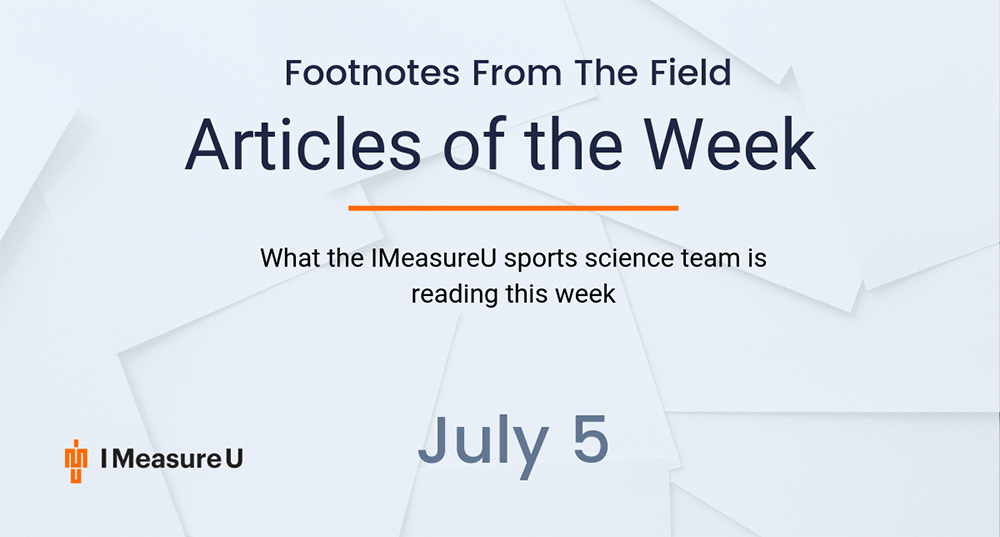
Here’s what the sports science team at IMeasureU is reading this week:
The first article from this edition of the articles of the week is an easy to read article from Training Ground Guru. Research scientist and podiatrist at Aspetar in Doha, Athol Thompson, explains his most recent research in the area of the interaction between a player’s boot and the playing surface. This article concludes with some recommendations for practitioners to inform their athletes on choosing the correct footware.
The next article comes from the Journal of Biomechanics where author William Johnson and colleagues aim to accurately predict extension/flexion, abduction/adduction and internal/external rotation knee joint moments from marker-based motion capture alone, thus negating the requirement for embedded force plates and the inverse dynamics modeling process.
This article in the International Journal of Sports Medicine comes from Tim Gabbett and colleagues. The aim of this study was to determine whether using coupled acute:chronic workload ratios provided the same results as those when using uncoupled methods. This is a hot topic of debate within the sports science community at the minute and is well worth a read.
Our fourth article comes from Jocelyn Hafer and colleagues, looking at determining if less-experienced runners have different segment coordination and lower segment coordination variability compared with their more-experienced peers. Because running is a motor skill that may develop with experience, an analysis of segment coordination and its variability could provide additional insight into why injury incidence decreases with increasing experience.
The last article in this weeks articles of the week comes from Jack Hickey and colleagues in the Journal of Orthopaedic & Sports Physical Therapy who compared the number of days from acute hamstring injury to return to play clearance following a standardised rehabilitation protocol performed within either pain-free or pain-threshold limits. The authors’ results indicated that pain-threshold rehabilitation did not accelerate RTP clearance but did result in greater recovery of isometric knee flexor strength and better maintenance of bicep femoris long head fascicle length improvements compared to pain-free rehabilitation.
For more sports science check out our blog for in-depth case studies and industry updates. Also, be sure to sign up for our newsletter below so you are always up to date with the latest research.




